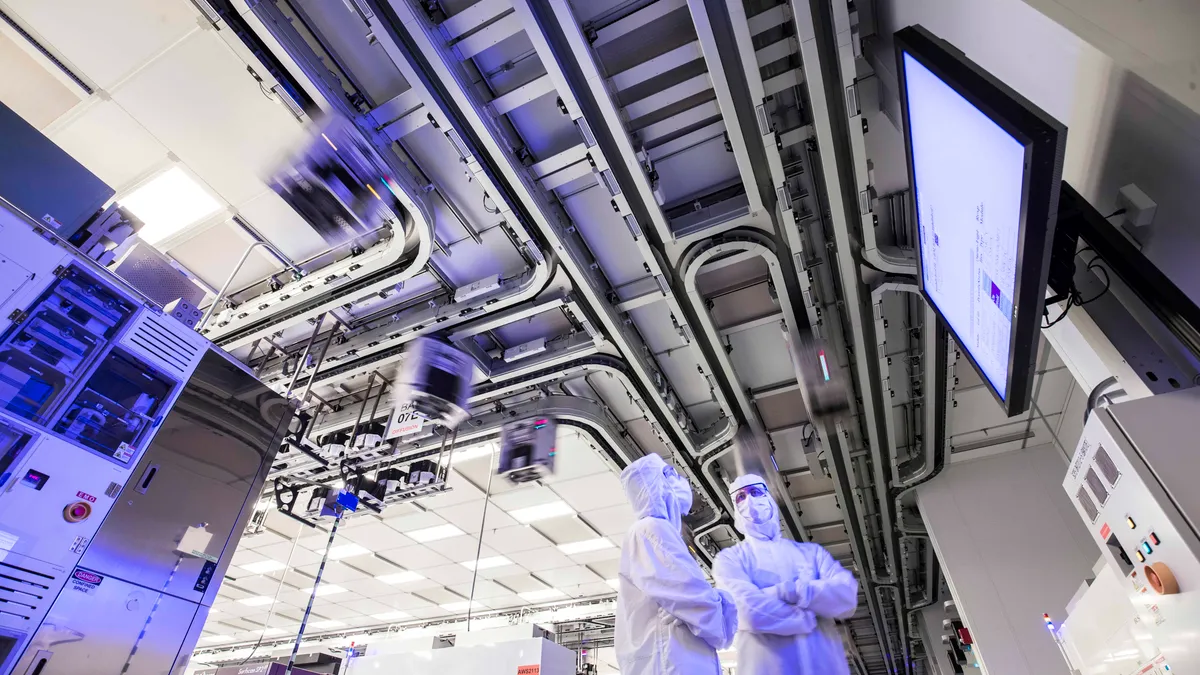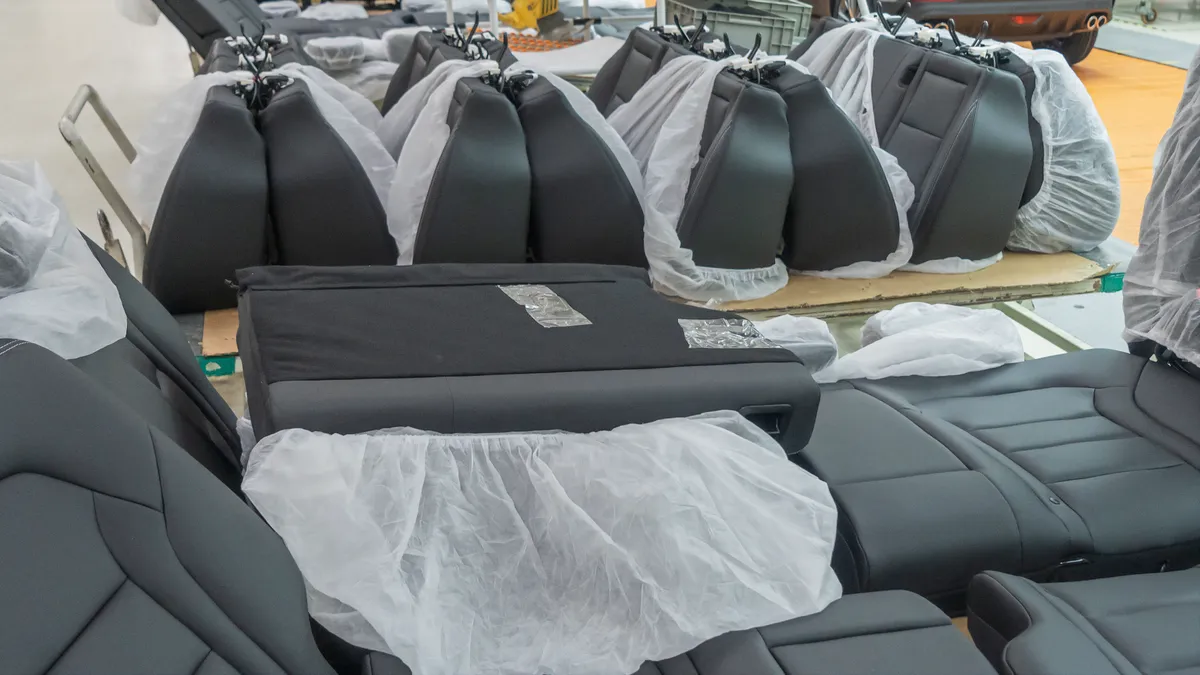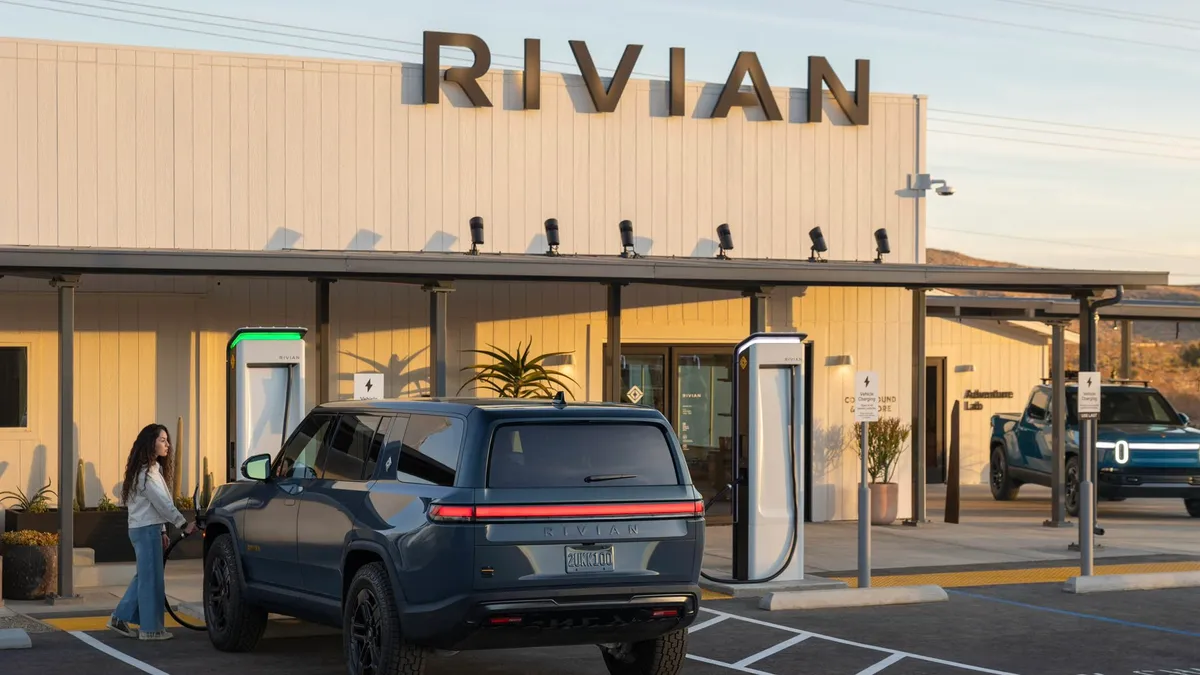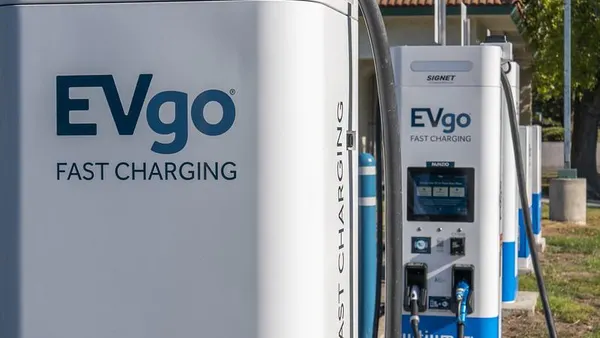Dive Brief:
- GlobalFoundries made progress in correcting its Q2 inventory after a slow start to the year left the chipmaker with bloated inventory levels, executives said on an Aug. 6 earnings call.
- While the chipmaker is still experiencing customer volume adjustments in home and industrial Internet of Things markets, its automotive and mobile device segments saw demand improvements that helped to move inventory towards normalization.
- GlobalFoundries' revenue, however, has yet to make a full comeback, down 12% year over year at $1.6 billion. "It's clear we're at the bottom of the cycle. The real question is, when do we come up in a meaningful way from the bottom of the cycle?" President and CEO Thomas Caulfield said on the call. "It's not a monolithic answer because we play in many end markets."
Dive Insight:
It's been a volatile year for chipmakers — artificial intelligence is driving demand in some areas, and yet segments like auto have been slow to gain traction.
After noting in Q1 that its auto segment inventory was growing due to slow demand, the company is rebounding in Q2, with revenue up 10% YoY.
"We expect meaningful year-over-year automotive revenue growth for 2024 as we support our customers across a diverse range of automotive applications in both industrial internal combustion engine and autonomous connected electrified vehicles," CFO John Hollister said on the call.
Caulfield added that he hopes to see AI-enabled devices, including vehicles, act as a growth driver beginning in Q4. The product segment is one many chip manufacturers are looking to for future revenue boosts.
"When I think of what's going to be that catalyst to get real growth, we're going to have to see if AI-enabled devices drive a refresh cycle," the CEO said. "And this is something we'll see over the coming quarters."
As demand rises, Hollister noted that GlobalFoundries aims to bring factory utilization rates back to more than 80% or 90%, up from the low- to mid-70% range it's been in. The chipmaker is pushing to improve its profit margins and cash flow as it raises factory utilization rates and focuses on cost efficiency.
"We've put ourselves in a position where we have healthy growth opportunities once the demand returns in the footprint we have," Caulfield added. "And by the time we start investing again, we're going to be investing off a much bigger base where free cash flow and investment can both happen simultaneously."
Like manufacturers across the U.S., however, Caulfield cautioned that greater demand growth is contingent on interest rates coming down. High interest rates have hampered both consumer and industrial spending throughout this year, as the Federal Reserve holds out on cutting rates until at least September.
As it looks to shore up its inventory and production for the latter half of the year, Hollister said GlobalFoundries will "follow our demand signal" when it comes to accumulating and managing inventory. The company has struck strategic raw material supply deals to take advantage of current market conditions.
"If you think about what we've done in almost two years now, the down cycle in our business is, one, we've focused on winning new business for the future," Caulfield said. "And two, we've taken a lot of structural costs out of our business. This is the opportunity for us to redefine and enhance our efficiency. It's a never-ending journey.”















